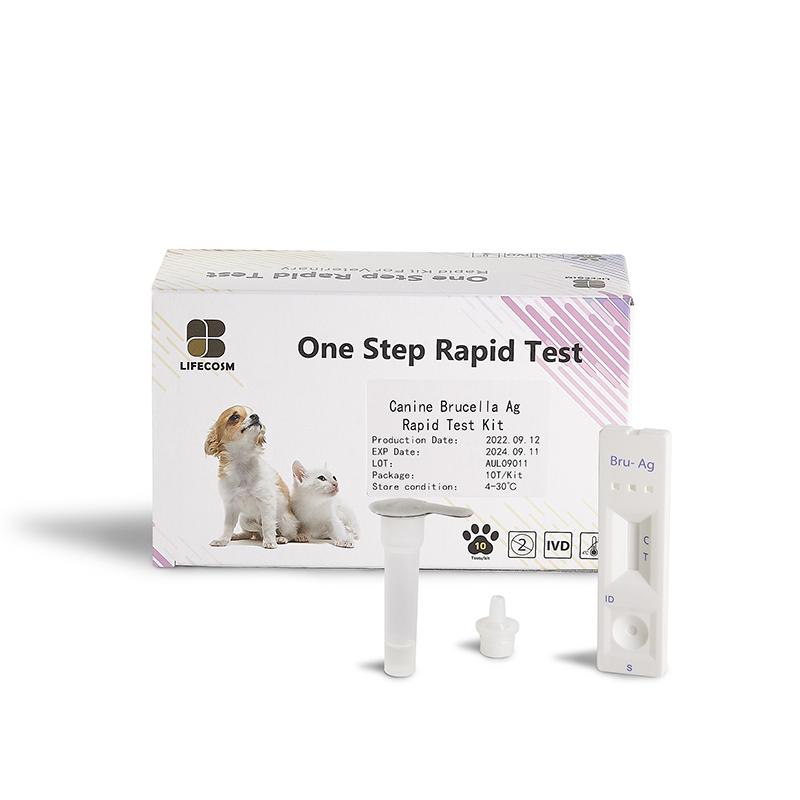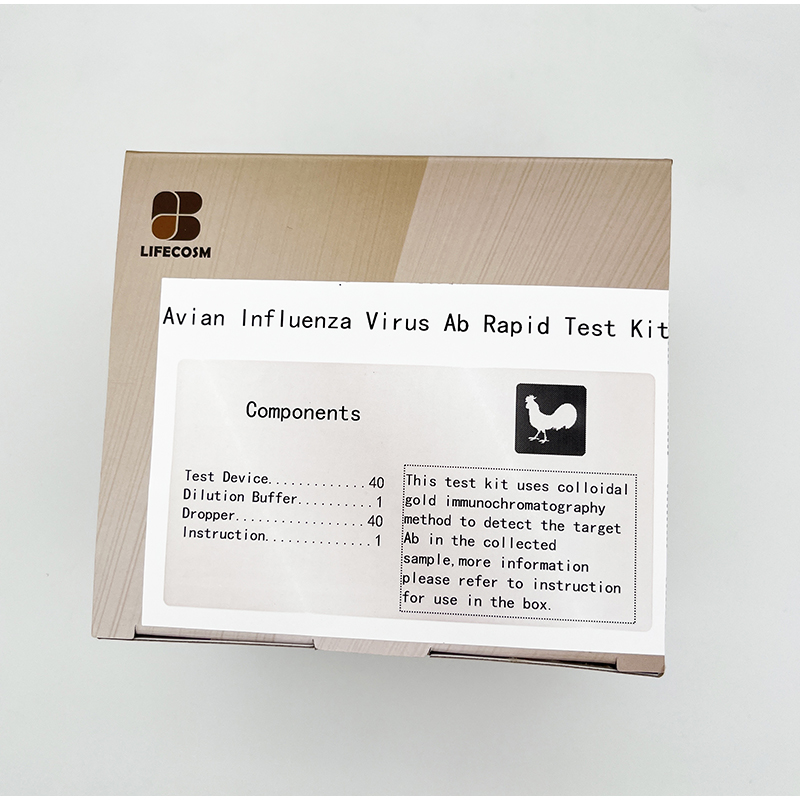
Products
OEM/ODM Manufacturer Kitten Leukemia - Lifecosm Rapid Bovine Tuberculosis Ab Test Kit for veterinary diagnostic test – Lifecosm
OEM/ODM Manufacturer Kitten Leukemia - Lifecosm Rapid Bovine Tuberculosis Ab Test Kit for veterinary diagnostic test – Lifecosm Detail:
Rapid Bovine Tuberculosis Ab Test Kit
|
Rapid Bovine Tuberculosis Ab Test Kit |
|
| Summary | Detection of specific Antibody of Bovine Tuberculosis within 15 minutes |
| Principle | One-step immunochromatographic assay |
| Detection Targets | Bovine Tuberculosis Antibody |
| Sample | Serum |
| Reading time | 10~ 15 minutes |
| Quantity | 1 box (kit) = 10 devices (Individual packing) |
| Contents | Test kit, Buffer bottles, Disposable droppers, and Cotton swabs |
| Caution | Use within 10 minutes after openingUse appropriate amount of sample (0.1 ml of a dropper)Use after 15~30 minutes at RT if they are stored under cold circumstances
Consider the test results as invalid after 10 minutes |
Information
Symptoms
There are many subtypes of avian influenza viruses, but only some strains of five subtypes have been known to infect humans: H5N1, H7N3, H7N7, H7N9, and H9N2. At least one person, an elderly woman in Jiangxi Province, China, died of pneumonia in December 2013 from the H10N8 strain. She was the first human fatality confirmed to be caused by that strain.
Most human cases of the avian flu are a result of either handling dead infected birds or from contact with infected fluids. It can also be spread through contaminated surfaces and droppings. While most wild birds have only a mild form of the H5N1 strain, once domesticated birds such as chickens or turkeys are infected, H5N1 can potentially become much more deadly because the birds are often in close contact. H5N1 is a large threat in Asia with infected poultry due to low hygiene conditions and close quarters. Although it is easy for humans to contract the infection from birds, human-to-human transmission is more difficult without prolonged contact. However, public health officials are concerned that strains of avian flu may mutate to become easily transmissible between humans.
Spreading of H5N1 from Asia to Europe is much more likely caused by both legal and illegal poultry trades than dispersing through wild bird migrations, being that in recent studies, there were no secondary rises in infection in Asia when wild birds migrate south again from their breeding grounds. Instead, the infection patterns followed transportation such as railroads, roads, and country borders, suggesting poultry trade as being much more likely. While there have been strains of avian flu to exist in the United States, they have been extinguished and have not been known to infect humans.
Order Information

Product detail pictures:
Related Product Guide:
Sticking to the perception of Creating products of top of the range and earning mates with people today from all over the world, we constantly put the desire of consumers in the first place for OEM/ODM Manufacturer Kitten Leukemia - Lifecosm Rapid Bovine Tuberculosis Ab Test Kit for veterinary diagnostic test – Lifecosm , The product will supply to all over the world, such as: Georgia, Guyana, Namibia, Our products are very popular in the word, like South American, Africa, Asia and so on. Companies to create first-class products as the goal, and strive to provide customers with high quality products, provide high-quality after-sales service and technical support, and customer mutual benefit, create a better career and future!
It's really lucky to find such a professional and responsible manufacturer, the product quality is good and delivery is timely, very nice.


